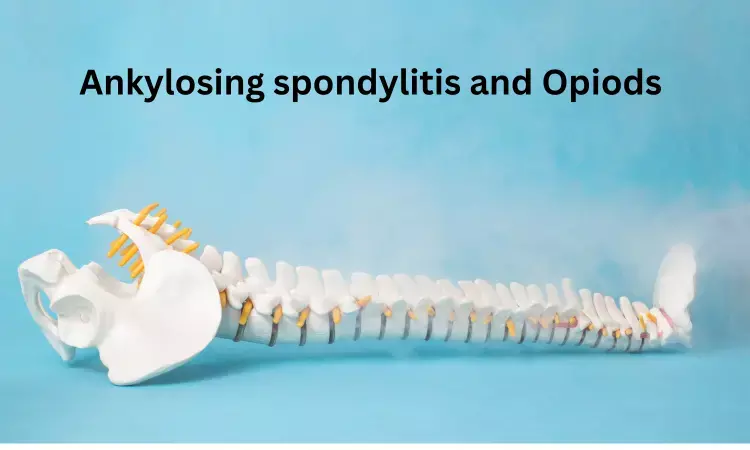- Home
- Medical news & Guidelines
- Anesthesiology
- Cardiology and CTVS
- Critical Care
- Dentistry
- Dermatology
- Diabetes and Endocrinology
- ENT
- Gastroenterology
- Medicine
- Nephrology
- Neurology
- Obstretics-Gynaecology
- Oncology
- Ophthalmology
- Orthopaedics
- Pediatrics-Neonatology
- Psychiatry
- Pulmonology
- Radiology
- Surgery
- Urology
- Laboratory Medicine
- Diet
- Nursing
- Paramedical
- Physiotherapy
- Health news
- Fact Check
- Bone Health Fact Check
- Brain Health Fact Check
- Cancer Related Fact Check
- Child Care Fact Check
- Dental and oral health fact check
- Diabetes and metabolic health fact check
- Diet and Nutrition Fact Check
- Eye and ENT Care Fact Check
- Fitness fact check
- Gut health fact check
- Heart health fact check
- Kidney health fact check
- Medical education fact check
- Men's health fact check
- Respiratory fact check
- Skin and hair care fact check
- Vaccine and Immunization fact check
- Women's health fact check
- AYUSH
- State News
- Andaman and Nicobar Islands
- Andhra Pradesh
- Arunachal Pradesh
- Assam
- Bihar
- Chandigarh
- Chattisgarh
- Dadra and Nagar Haveli
- Daman and Diu
- Delhi
- Goa
- Gujarat
- Haryana
- Himachal Pradesh
- Jammu & Kashmir
- Jharkhand
- Karnataka
- Kerala
- Ladakh
- Lakshadweep
- Madhya Pradesh
- Maharashtra
- Manipur
- Meghalaya
- Mizoram
- Nagaland
- Odisha
- Puducherry
- Punjab
- Rajasthan
- Sikkim
- Tamil Nadu
- Telangana
- Tripura
- Uttar Pradesh
- Uttrakhand
- West Bengal
- Medical Education
- Industry
Opioid use in Ankylosing spondylitis major risk of fracture

Ankylosing spondylitis (AS) is a rare type of arthritis that mainly affects the back, by causing inflammation in the spine. AS occurs more frequently in men than women (2:1). Mostly known to peak in the second and third decades of life. Approximately 80% of patients with AS experience symptoms at ≤ 30 years of age, while only 5% will present with symptoms at ≥ 45 years of age.
Researchers in a large cohort study published in Arthritis Care and Research journal evaluated the incidence rate and factors associated with fractures among adults with ankylosing spondylitis (AS). The study found that with increasing age, historical fracture, and use of opioids led to higher risk of fracture. Men and women both were equally likely to have a fracture.
The retrospective cohort study with data from the Rheumatology Informatics System for Effectiveness (RISE) registry linked to Medicare claims from 2016-2018. Patients were required to have two AS ICD codes, ≥30 days apart, and a subsequent Medicare claim. Then, one year of baseline characteristics were included, after which patients were observed for fractures. First, they calculated the incidence rate of fractures. Secondly constructed logistic regression models to identify factors associated with fracture, including age, sex, race/ethnicity, body mass index, Medicare/Medicaid dual-eligibility, area deprivation index, Charlson comorbidity index, smoking status, osteoporosis, historical fracture, and use of osteoporosis treatment, glucocorticoids, and opioids.
The key findings of the study are
• Researcher in total identified 1,426 adults with prevalent AS. Mean (SD) age was 69.4 years (9.8), 44.3% were female, and 77.3% were non-Hispanic White.
• Fractures occurred in 197 adults with AS. The overall incidence rate of fractures was 76.7 (95% CI 66.4-88.6) per 1,000 person-years.
• Older age (OR 2.8, 95% CI 1.39-5.65), historical fracture (OR 5.24, 95% CI 3.44-7.99), and use of >30 mg morphine equivalent (OR 1.86, 95% CI 1.08-3.19) conferred increased odds of fracture.
Researchers concluded that “In this large sample of Medicare beneficiaries with AS, increasing age, historical fracture, and use of opioids had a higher odds of fracture. Men and women were equally likely to have a fracture. Because opioid use was associated with fracture in AS, this high-risk population should be considered for interventions to mitigate risk.”
Reference: Stovall R, et al "Incidence rate and factors associated with fractures among Medicare beneficiaries with ankylosing spondylitis in the United States" Arthritis Care Res 2023; DOI: 10.1002/acr.25219.
MSc. Neuroscience
Niveditha Subramani a MSc. Neuroscience (Faculty of Medicine) graduate from University of Madras, Chennai. Ambitious in Neuro research having worked in motor diseases and neuron apoptosis is interested in more of new upcoming research and their advancement in field of medicine. She has an engrossed skill towards writing and her roles at Medical dialogue include Sr. Content writer. Her news covers new discoveries and updates in field of medicine. She can be reached at editorial@medicaldialogues.in
Dr Kamal Kant Kohli-MBBS, DTCD- a chest specialist with more than 30 years of practice and a flair for writing clinical articles, Dr Kamal Kant Kohli joined Medical Dialogues as a Chief Editor of Medical News. Besides writing articles, as an editor, he proofreads and verifies all the medical content published on Medical Dialogues including those coming from journals, studies,medical conferences,guidelines etc. Email: drkohli@medicaldialogues.in. Contact no. 011-43720751


